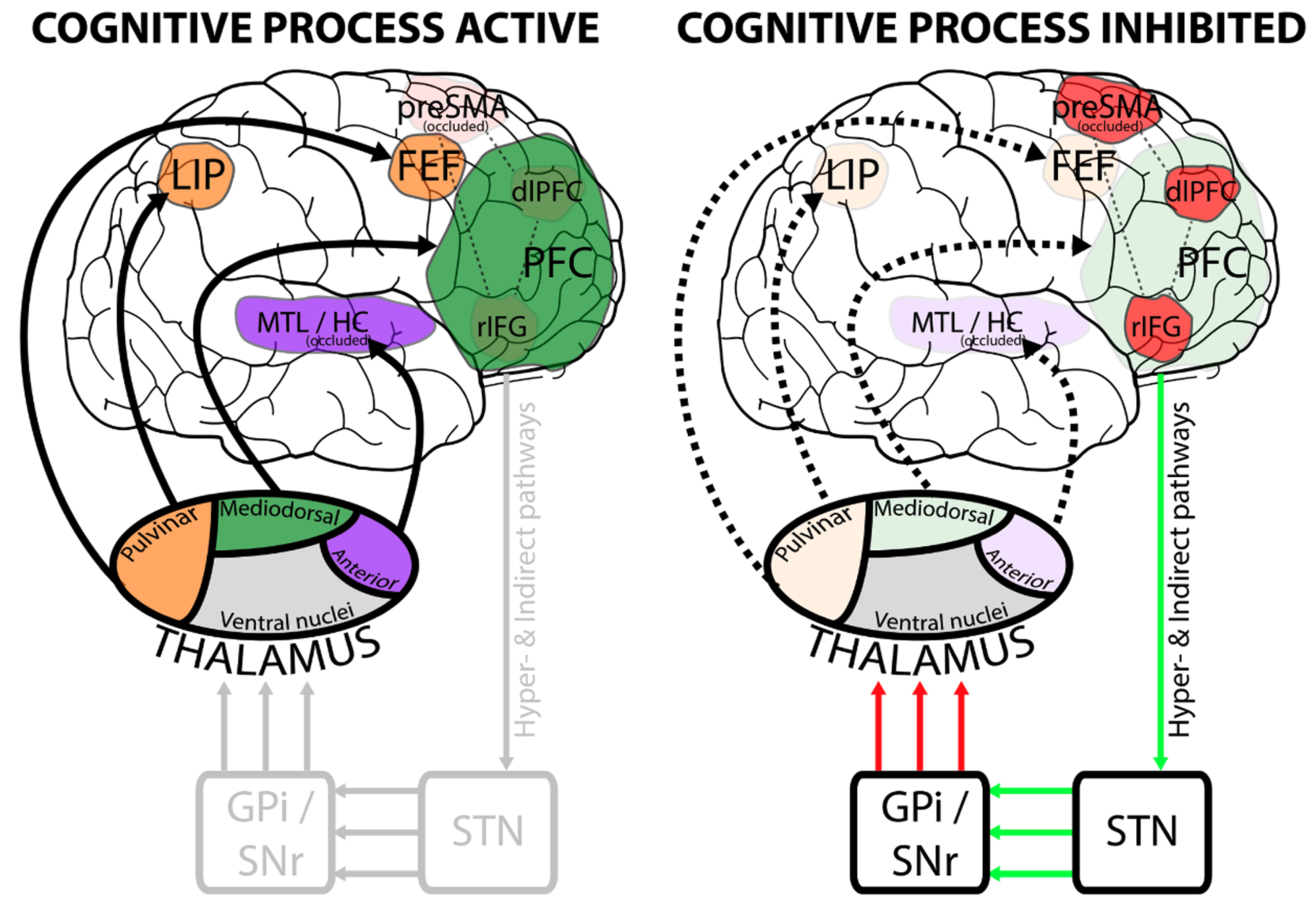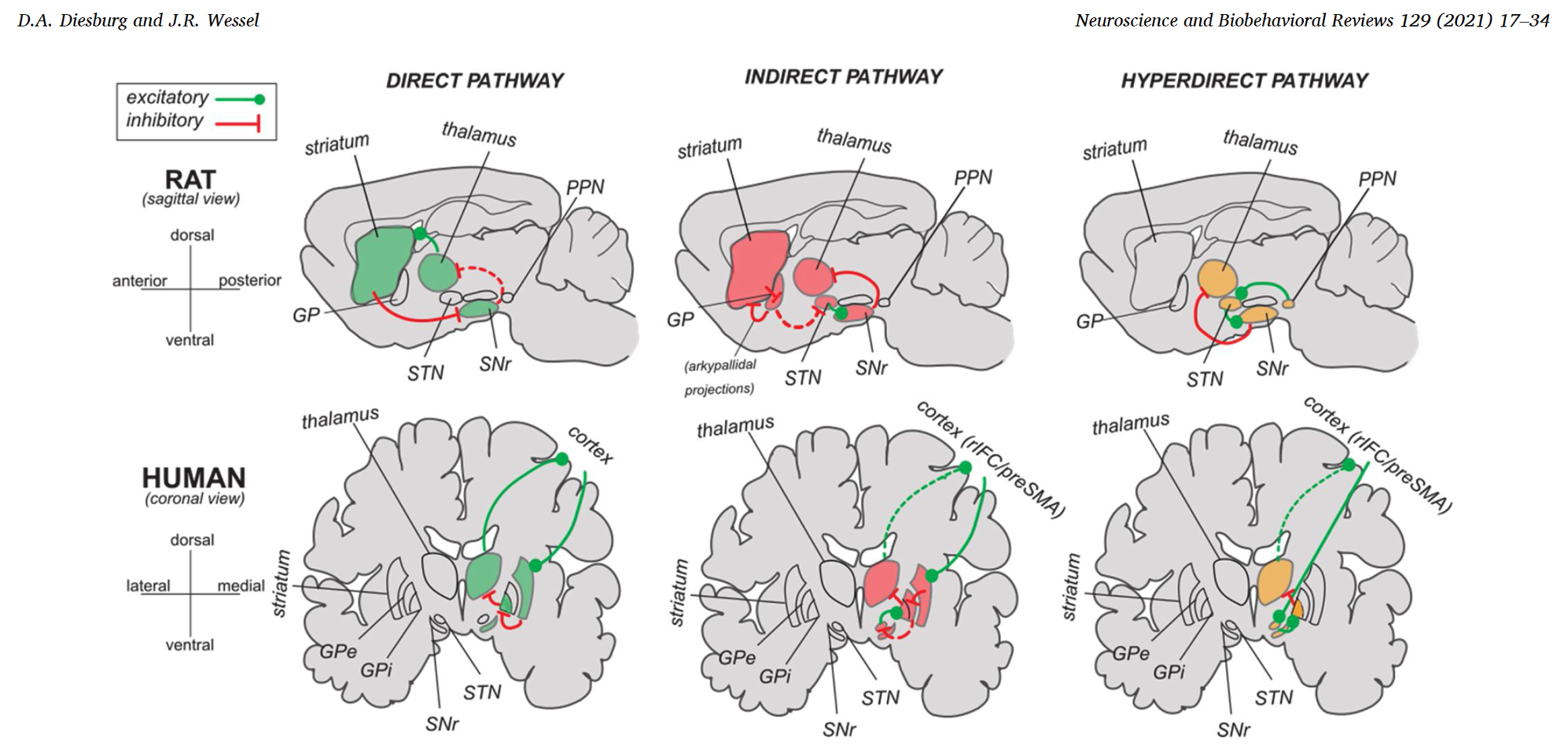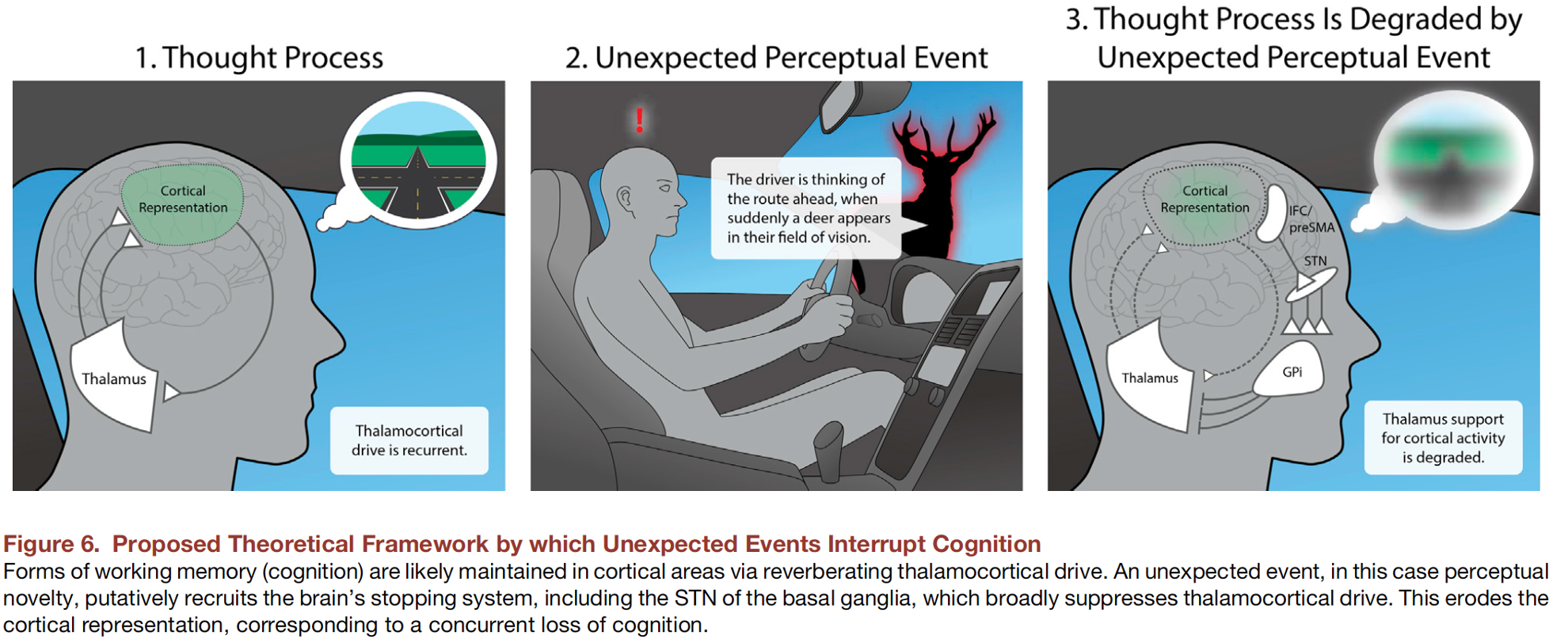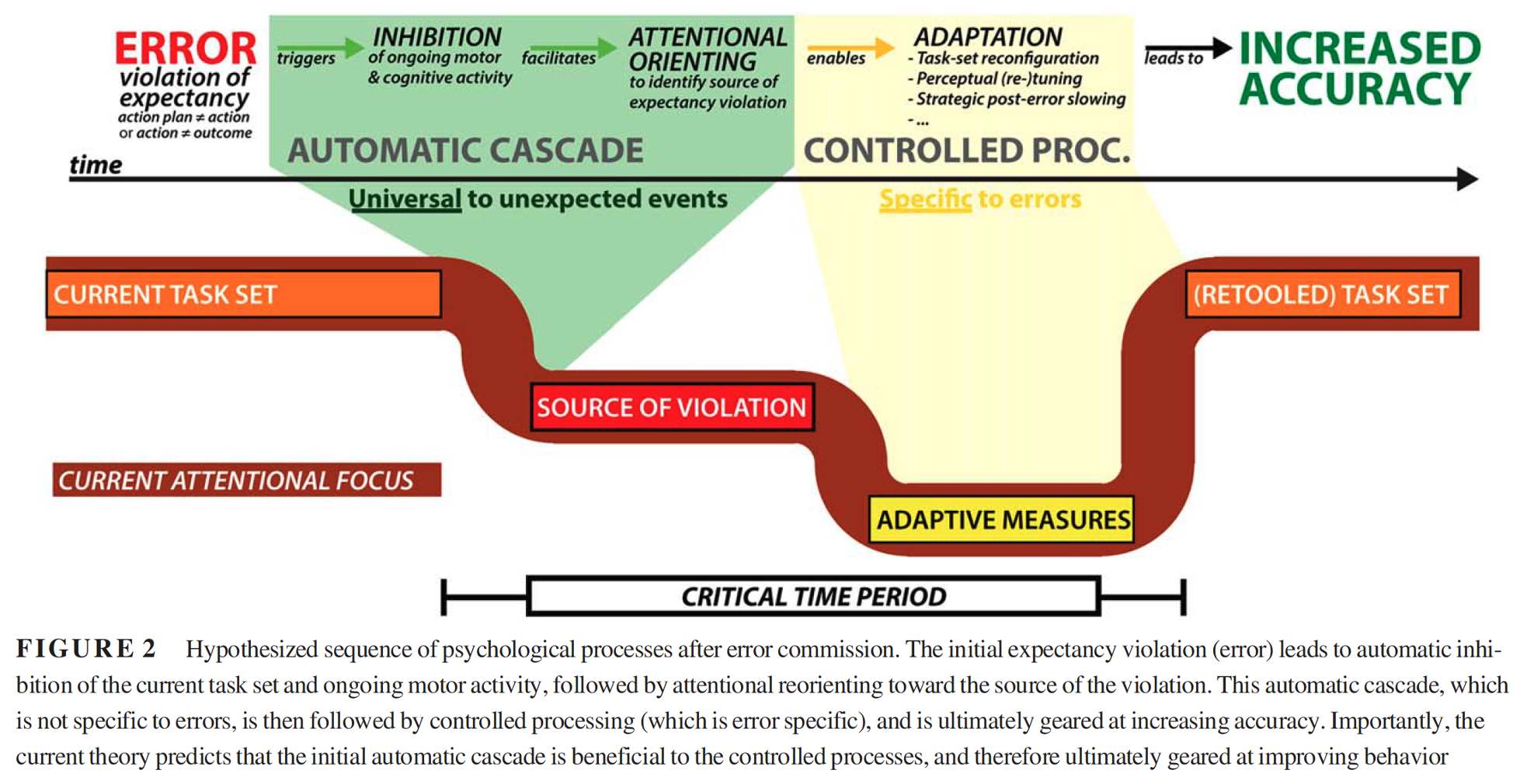Breadcrumb
- Home
- Research
Research
HOW DO HUMANS THINK AND ACT EFFECTIVELY?
Our lab investigates the building blocks of goal-directed human behavior. One of the cornerstones of human behavior is the ability to use control processes to override inappropriate thoughts and actions. This ability, also known as ‘inhibitory control’, is the focus of our lab.
Neural networks underlying domain-general inhibitory control
We have identified a brain network we believe to be underlying domain-general inhibitory control – i.e., the goal-directed suppression of inappropriate or no-longer-needed thoughts, actions, urges, memories, etc. In this network, the brain’s Prefrontal Cortex works in accord with the subcortical Basal Ganglia to suppress the neural activity that is underlying unwanted processes. Our most recent theoretical work can be found in Wessel & Anderson (Trends in Cognitive Sciences, 2023).

From: Wessel & Anderson, Trends in Cognitive Sciences, 2023
The neurophysiology of action-stopping
One of our primary interests is the stopping of actions in particular. This is a well-characterized ability, for which many well-established experimental models exist. We have identified several neurophysiological signatures that allow us to track the activity of the inhibitory control circuit during action-stopping with high fidelity, both in healthy humans and those with impairments to this ability (e.g., in Parkinson’s Disease or Brain Lesions). Our most recent theoretical work on the topic can be found in Diesburg & Wessel (Neuroscience & Biobehavioral Reviews, 2021). Our most recent empirical work in Parkinson’s can be found in Wessel et al. (Current Biology, 2022), Choo et al. (eLife, 2023), and Diesburg, Greenlee & Wessel (eLife, 2021).

From: Diesburg & Wessel, Neuroscience & Biobehavioral Reviews, 2021
Inhibitory control across different situations
We also try to outline the boundary conditions under which this inhibitory control circuit is active. Humans can deploy this circuit in a large number of real-world situations, whether they are explicitly cued to do so (e.g., stopping to walk when a light turns red), whether factors in their environment imply that ongoing thoughts and actions need to be revisited (e.g., stopping to think about something after sudden unexpected events), or whether actions do not have the expected outcomes (e.g., after action errors). Our most recent theoretical work can be found in Wessel & Aron (Neuron, 2017), with some of our most recent empirical work found, for example, in Tatz, Soh & Wessel (JNeuro, 2021) and Soh & Wessel (Cerebral Cortex, 2021).

From: Wessel & Aron, Neuron, 2017
Failures of inhibitory control
Finally, we are interested in what happens when inhibitory control fails – in other words, when inappropriate thoughts and actions could not be stopped. One model to study this is action errors. We have identified a precise sequence of neural processes that are specific to errors, and adjust behavior for future reference. Our most recent theoretical work can be found in Wessel (Psychophysiology, 2018), with some of our most recent empirical work found, for example, in Choo, Mather & Wessel (Journal of Neuroscience, 2023), Guan & Wessel (Journal of Neuroscience, 2022), and Wessel et al., (JEP:General, 2022).

From: Wessel, Psychophysiology, 2018
LAB SPACE
Our lab space spans both sides of the river in Iowa City, as we have space in both the Department of Psychological and Brain Sciences in the College of Liberal Arts and Sciences and the Medical Research Center in the College of Medicine.

METHODS
Work in our lab is question-driven and not limited to a single method. Our work typically starts with experimental psychology and / or computational modeling and then tests neural hypothesis via EEG, TMS, fMRI, intracranial recordings, EMG, pupil recordings, DBS, or brain lesions. Furthermore, we have the following facilities and methods at our disposal:
EEG laboratoriesOur lab has three research-dedicated EEG laboratories:
|
|
TMS laboratoriesOur has lab two research-dedicated, dual-pulse capable MagStim TMS stimulators. Furthermore, we have shared access to a neuro-navigated MagVenture repetitive TMS stimulator, complete with a BrainSight neuronavigation system. |
|
fMRI FacilityThe University of Iowa’s Institute for Biomedical Imaging houses both 7T and 3T GE fMRI scanners.
|
|
Pupil trackingWe have two research-dedicated, camera-based 1000Hz SR Research Eyetrackers, one of which is fMRI compatible.
|
|
EMG and Force TrackingEvery piece of hardware in our lab (EEG, TMS, fMRI, etc.) is equipped with compatible electromyography hardware, which allows us to quantify movement in real-time. Moreover, we have a highly-specialized ATI Industrial Automation Force-Torque sensor.
|
|
Deep Brain Stimulation & Intracranial RecordingsWe have a long-standing, highly successful collaboration with Dr. Jeremy Greenlee, Neurosurgeon and Neuroscientist at UIHC. We have successfully run several studies using DBS and intracranial recordings, including highly novel combinations of TMS and DBS. Most recently, we have begun to record simultaneous EEG and intracranial data using Medtronic’s new BrainSense bluetooth interface for DBS patients.
|
|
Brain LesionsIowa is home to the world’s largest database of active brain lesion research participants, the Iowa Neurological Patient Registry. Maintained by Drs. Dan Tranel and Aaron Boes, we extensively collaborate with them to test causal hypotheses about the involvement of specific cortical regions in inhibitory control.
|
|